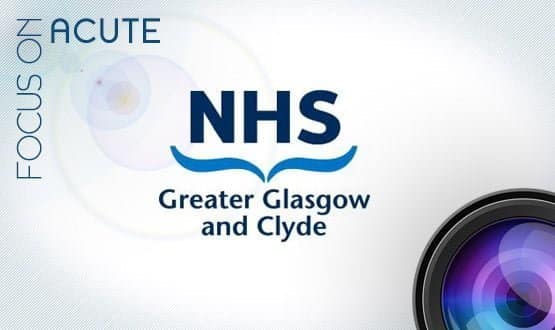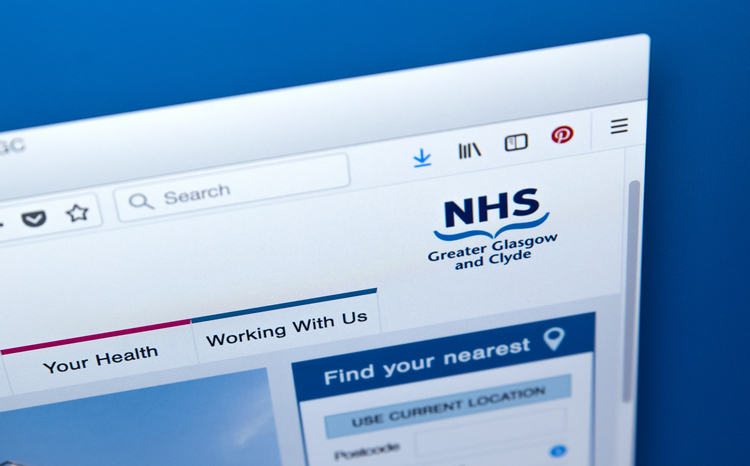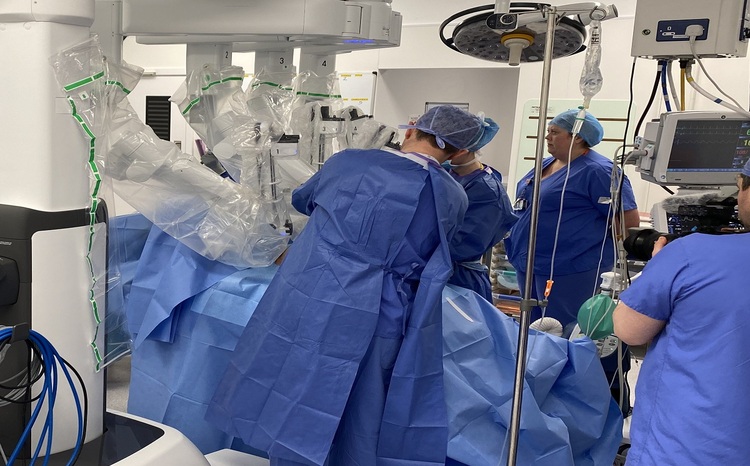EHI focus on: NHS Greater Glasgow and Clyde
- 7 June 2012

A winding walk through the maze-like corridors of Glasgow Royal Infirmary leads to the desk of cardiologist Dr Nick Goodfield.
Dr Goodfield, like many consultants in this city, works across two hospital sites. When he is not at the Infirmary, he is at Stobhill Hospital well to the north.
The arrangement was not too much of a problem when he knew all of his patients and could remember their conditions without the paper notes that were often sitting on a desk elsewhere.
But things have changed. Nowadays he has numerous patients and cannot possibly remember all their details. So the development of a clinical portal by the health board has been “invaluable.”
“It makes life so much easier for me to do things without waiting for the case notes, and that’s even more maximised when I’m working across two sites,” he explains.
Dr Goodfield also uses the portal to triage patients, saving him a lot of time and improving patient care and safety.
“The younger people find it easy, but the older guys can struggle a bit, the whole concept of doing it electronically is difficult,” he acknowledges. “People are always resistant to change; you just need to learn some slightly new skills.”
Growing fast
The portal project started in 2007, as part of a bigger programme to develop clinical portals across NHS Scotland.
It has been built using Orion’s Concerto and Rhapsody technology, has received some £10m of government funding, and has really taken off over the past two years.
Portal user numbers have risen from 4,600 in 2010 to more than 18,000 active users last month (defined as users who have used the portal in the past two weeks).
Over one week in February 2010, 67,000 results were viewed via the portal, while about 270,000 were viewed over a week in February this year.
The amount of information available online has expanded to the point where the portal team is working on clinical dashboards to provide pre-summarised information specific to each specialty.
Meanwhile, clinicians can launch other programmes from within the portal – such as order communications – and can hold multi-disciplinary meetings without having to be all in the same room.
Clinical portal project manager, Scott Hendry, explains that at the beginning of the project it was a struggle to get clinicians involved. These days, the team is often approached by small specialties who want to be integrated with the system.
“I get emails every week from clinicians waiting to get their information onto the portal,” he says.”Four years ago, when we asked them, they were ‘very busy’. Now there are so many users it becomes the best way to share information.”
Successes in the hospital setting mean the portal has now been rolled out to 2,000 community and mental health workers, who are also feeding information back into the system.
GPs are also keen to move beyond their current restricted access and the portal team is “working out the rules for role based access” for them, says electronic patient record programme manager Bud Campbell.
Ultimately, the aim is to link the Greater Glasgow and Clyde portal with two other portal projects running in parallel in the North and South East of Scotland.
Delivering cost savings
The authors of England’s long-awaited NHS information strategy, released last month, seemed to have been wowed by portal technology while they were working on the document.
The ‘Power of Information’ suggests that portals should be rolled out in all sorts of settings, and promises that big benefits will be delivered as a result.
Campbell says that the benefits realised by NHS Greater Glasgow and Clyde have been “huge”; although he also says he cannot give details until an independent benefits analysis report is released.
Even so, he says cost savings have come from a reduction in the use of paper, drug reconciliation, and a reduction in lab testing.
The time needed to fill out medical reconciliation forms when a patient leaves hospital has shrunk because pharmacists can see what medication a patient was taking on admission, using the GP referral letters on the portal.
Still working with paper
When the project started, a decision was made to retain the systems already in use, instead of requiring staff to change their ways of working.
Campbell says the drawback of this approach is that the portal simply sits over top of whatever is good – or bad- about an existing solution.
It also sits over the top of a lot of paper-based working. As a result, about 5,000 documents are being scanned into the portal every week, so the information in them can be shared with other sites and teams.
Even so, patient case notes are only scanned on discharge. So they are not available on the portal during the inpatient stay, unless the information on them is directly entered into an electronic system.
The next stage of the portal project is the implementation of a number of paper light processes within hospitals. Four specialty sectors are now finalising 16-week plans to move to paper light.
Mobile the next frontier
Campbell also wants to move to mobile working, which could include providing access to the portal via apps on iPads and Android devices.
“That’s where, for the first time ever, we are relying on the companies bringing software to allow us to do that,” he adds. Currently, staff can only get remote access via tokens.
On the security front, Campbell says role-based access control means every single action that is taken on the portal can be audited.
Access control for highly sensitive data means a clinician can access everything, while a health care support worker may be able to see only that a certain letter or test result exists, without being able to open the document.
Campbell believes the project has been such a success because it was driven by clinical need and not imposed from above.
“The big difference between Glasgow and England [in the era of the National Programme for IT in the NHS] is we have done it from the bottom up,” he explains.
“We used technology they were using already and integrated it, but England tried to bring in new technology and change the way of working.”





